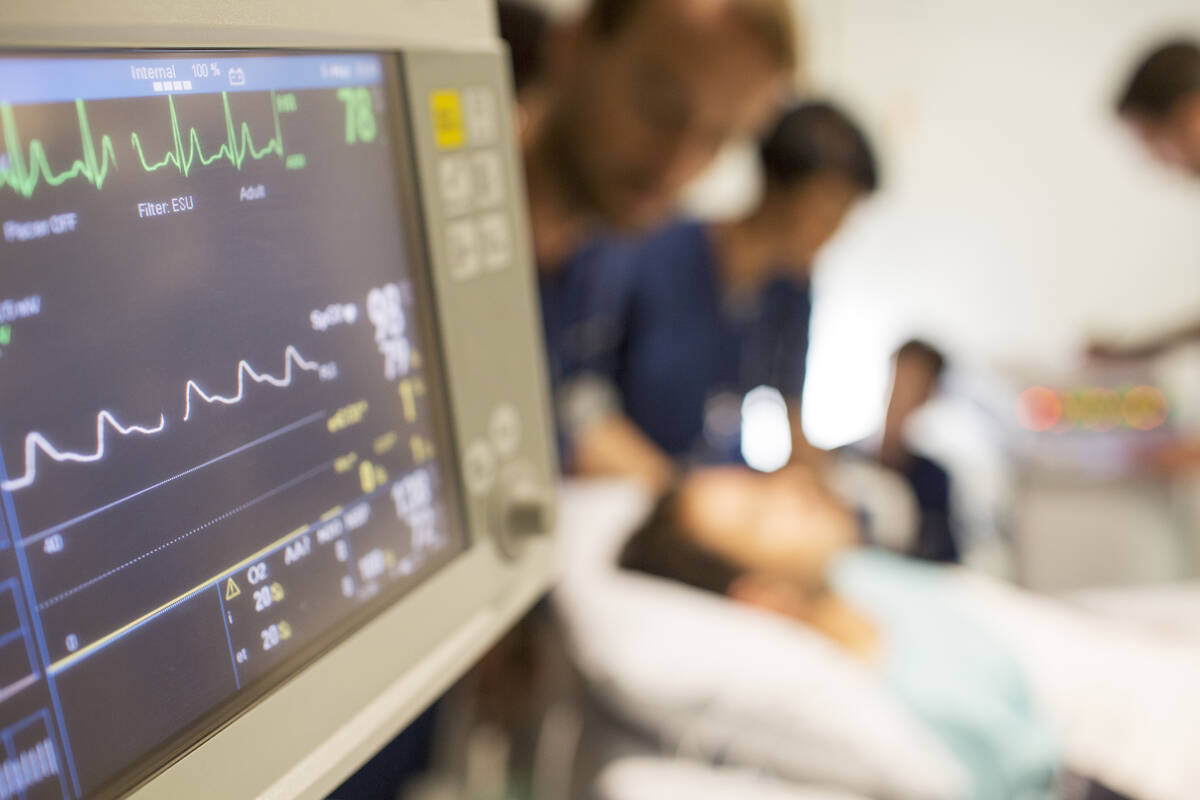How does cardiac arrest differ from a heart attack?
Cardiac arrest, or sudden cardiac arrest as it is more formally known, is a medical emergency. It happens when an event, usually an electrical disturbance, quickly and unexpectedly causes your heart to stop working. It’s not the same as a heart attack and is called sudden because it seems to happen without warning.
Dr. Christopher DeSimone, a Mayo Clinic cardiac electrophysiologist specializing in abnormal cardiac rhythm, answers questions about cardiac arrest, the differences between cardiac arrest and heart attack, and why time is critical when treating someone with cardiac arrest.
What happens during cardiac arrest?
Cardiac arrest is when the heart cannot fulfill its duties and pump blood, especially oxygenated blood, around the body to get to critical areas, such as the brain.
Now, when there is an arrest, there are two things we go over. One could be the heart stops electrically, so the heart is not going to pump. The other one is the heart goes into an abnormal or lethal rhythm, which we call ventricular fibrillation. That’s a more chaotic rhythm of the heart. So, electrically this heart’s in a bad rhythm, and the ventricles are quivering and not pumping out.
Ultimately, both things put you into cardiac arrest, sudden cardiac arrest or sudden cardiac death.
Why is immediate care, like CPR and AED, so critical?
Survival is possible with immediate, appropriate medical care. Call 911, if able, first.
Once you know that someone has suffered or suspect that they’ve suffered a cardiac arrest or sudden cardiac arrest, it is important to restore the rhythm as fast as you can.
A cardiac arrest could happen wherever we are in life — in the malls, schools and at work. And if someone passes out, you want to make sure that they’re breathing, their heart has a pulse and their heart is pumping. If their heart is not pumping, then what people need to do is emergent CPR.
And every time we walk by things in the hallway, whatever buildings we’re in, there are all these things called AED, or automated external defibrillators. That’s one of those things that people see on TV where they’re shocking the patient back into a normal rhythm.
Because if that device notes that the patient does not have a good rhythm and they’re in this ventricular fibrillation, the machine will tell you to shock the heart, and the machine will shock. You’re trying to electrically restart the heart so that it goes back into its normal rhythm.
Why is time so crucial for dealing with cardiac arrest?
Time is critical because the heart’s not pumping blood to the rest of the body — not to the lungs, not to the brain. The oxygen is not getting to the tissues as it usually does when the heart’s pumping normally. Everyone knows that time is heart muscle, time is myocardium.
When someone’s having a heart attack, think about the whole body having a heart attack. The brain is not getting blood, the liver is not getting blood, and the kidney is not getting blood. The heart itself isn’t getting oxygenated blood, so all those tissues could die off.
What is the typical treatment for a person having cardiac arrest?
As soon as you can establish a rhythm or if you’re still doing CPR and have given medications and doing advanced cardiac life support, part of that is to put a tube down the patient’s throat, intubation, and sedate them so that they’re under anesthesia.
Sometimes they will even cool the patient. The patient will not be breathing on their own. A machine will be breathing for the patient. And sometimes what we do is we also cool the patient down.
We’re trying to let the tissues that might not have gotten oxygen for minutes recuperate some of their function and make the body spend the least energy as we can. It’s common for that to happen.
What is the difference between cardiac arrest and heart attack?
When someone has a heart attack, it’s more of a plumbing problem. The major arteries going to the heart get plugged up with a clot. When that happens, there’s a blockage in the plumbing, and then the heart at that area might get weak because it can’t pump because it doesn’t get blood flow to itself. And things could happen — like the patient goes into an electrical problem, like sudden cardiac arrest. The plumbing leads to an electrical problem; that’s common.
But the heart attack is blocking the plumbing, so blood does not get to the heart. When someone has a sudden cardiac arrest or sudden cardiac death, it could be a manifestation of a heart attack. But sudden cardiac arrest doesn’t mean you necessarily need to have heart blockages.


















